
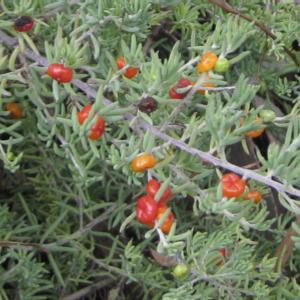
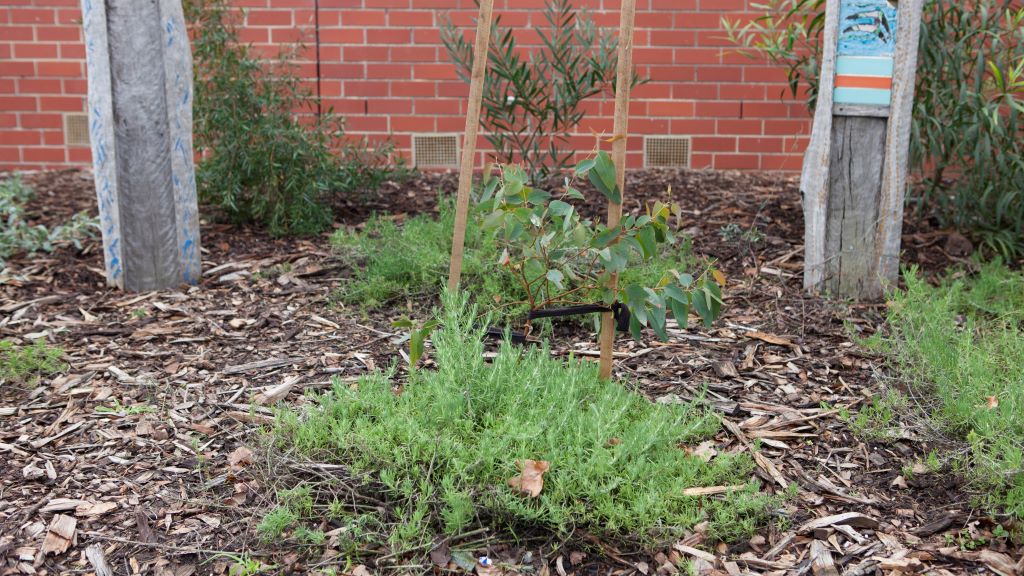
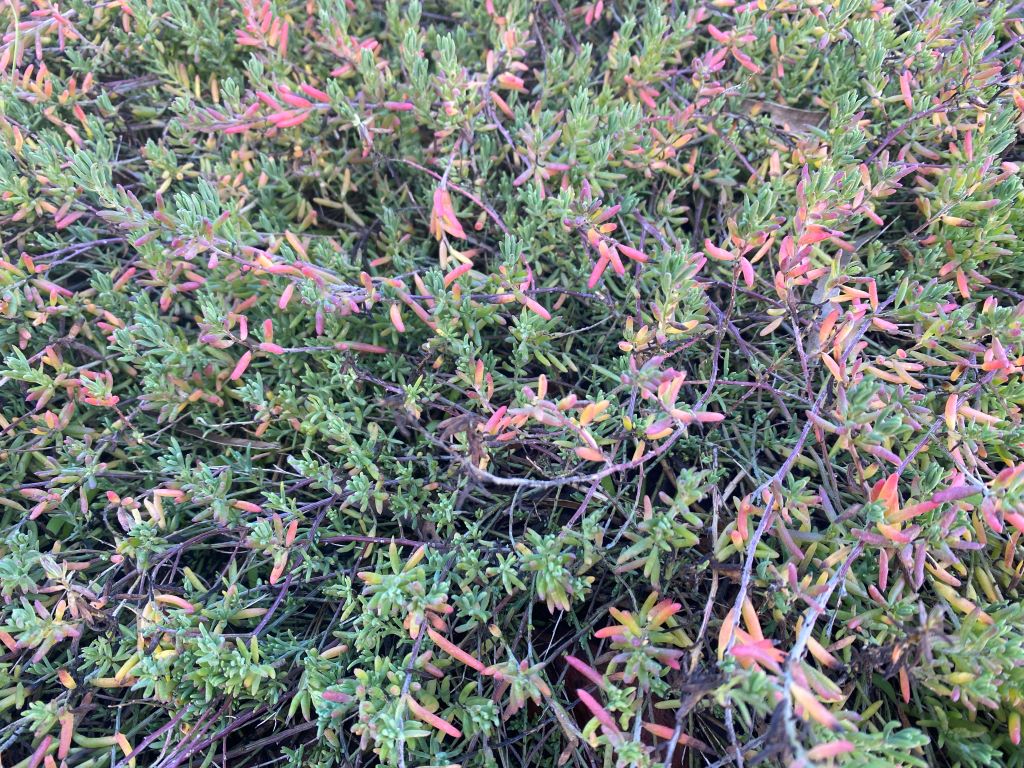
As garden plants they grow quickly and need little care, beyond an occasional tidy-up with the secateurs. They are lovely planted amongst rocks, paired with some of our native grasses such as Wallaby Grass or Kangaroo Grass, or perhaps some Silky Blue-grass, Dichanthium sericeum, to complement the blue-grey foliage of the saltbush. Add in some low growing native daisy plants such as Chrysocephalum apiculatum, with small yellow button flowers and you have a very easy-care and colourful garden combination. All round, these are great plants for people, wildlife and country!
Check out our plant ID signs below, in the Melton Botanic Gardens and at Sprout Edible Garden at Kidstown Mooroopna, helping folks learn about the wonders of Ruby Saltbush. You can buy these signs through the links below.
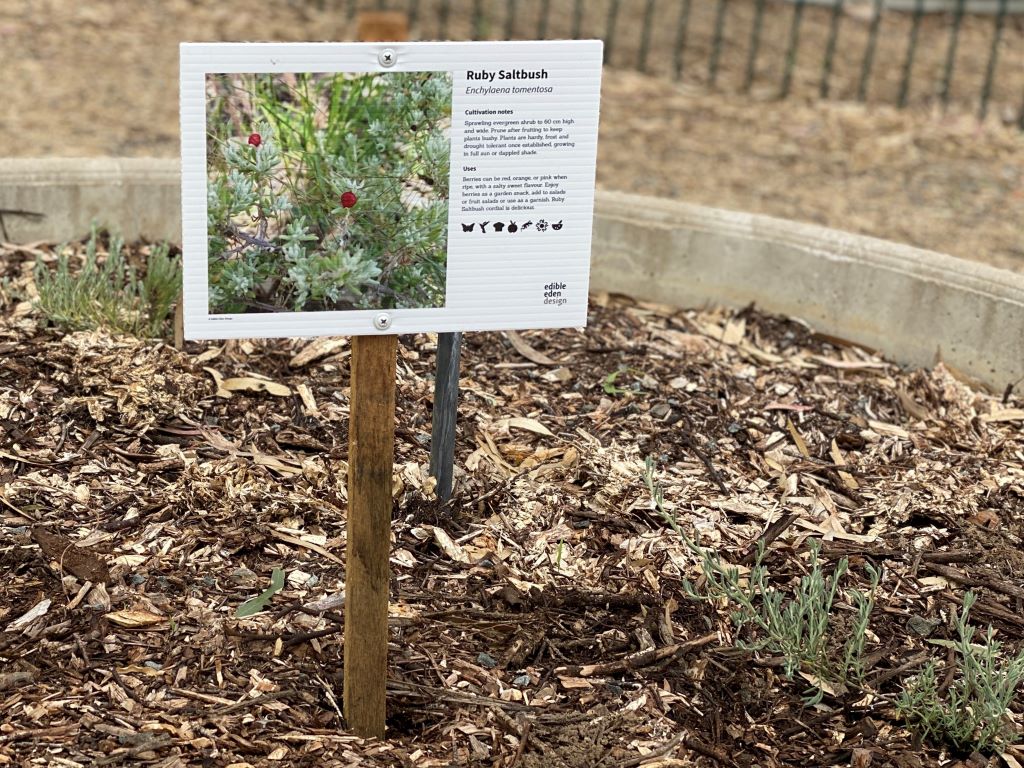
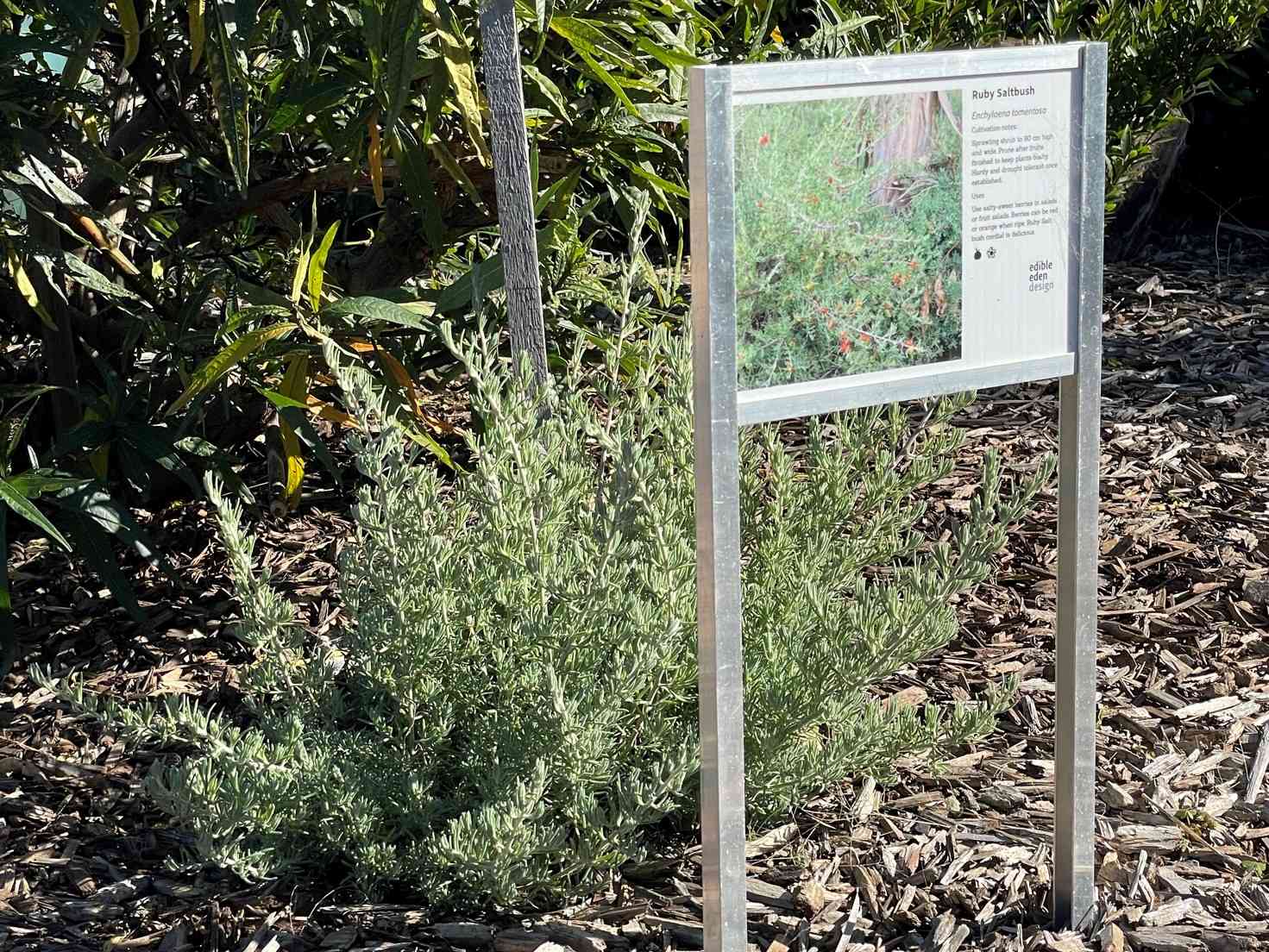

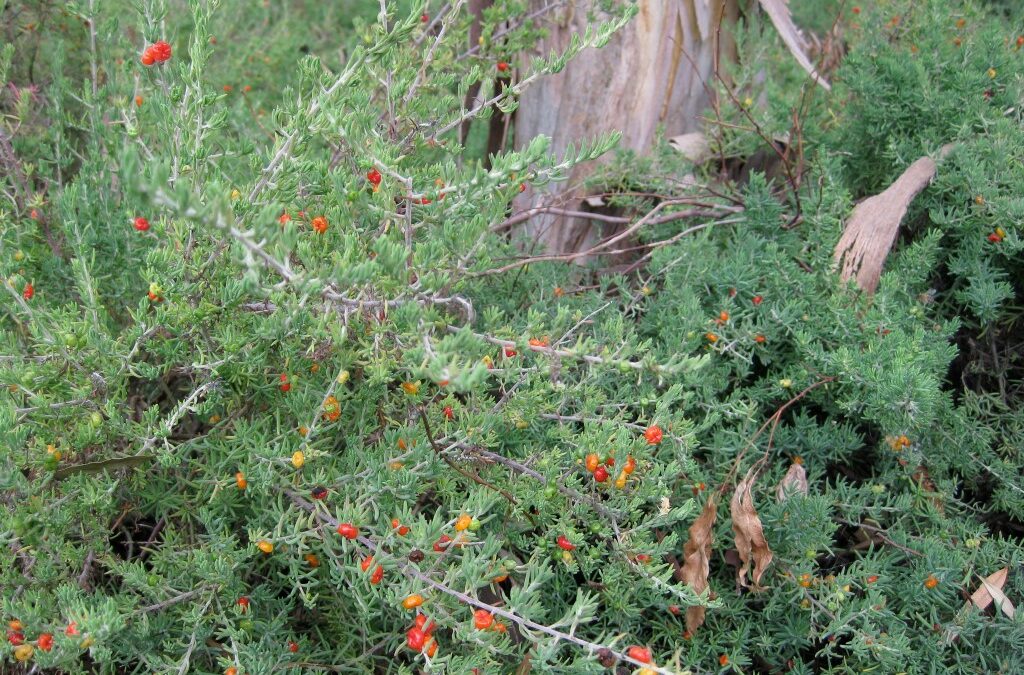
Recent Comments